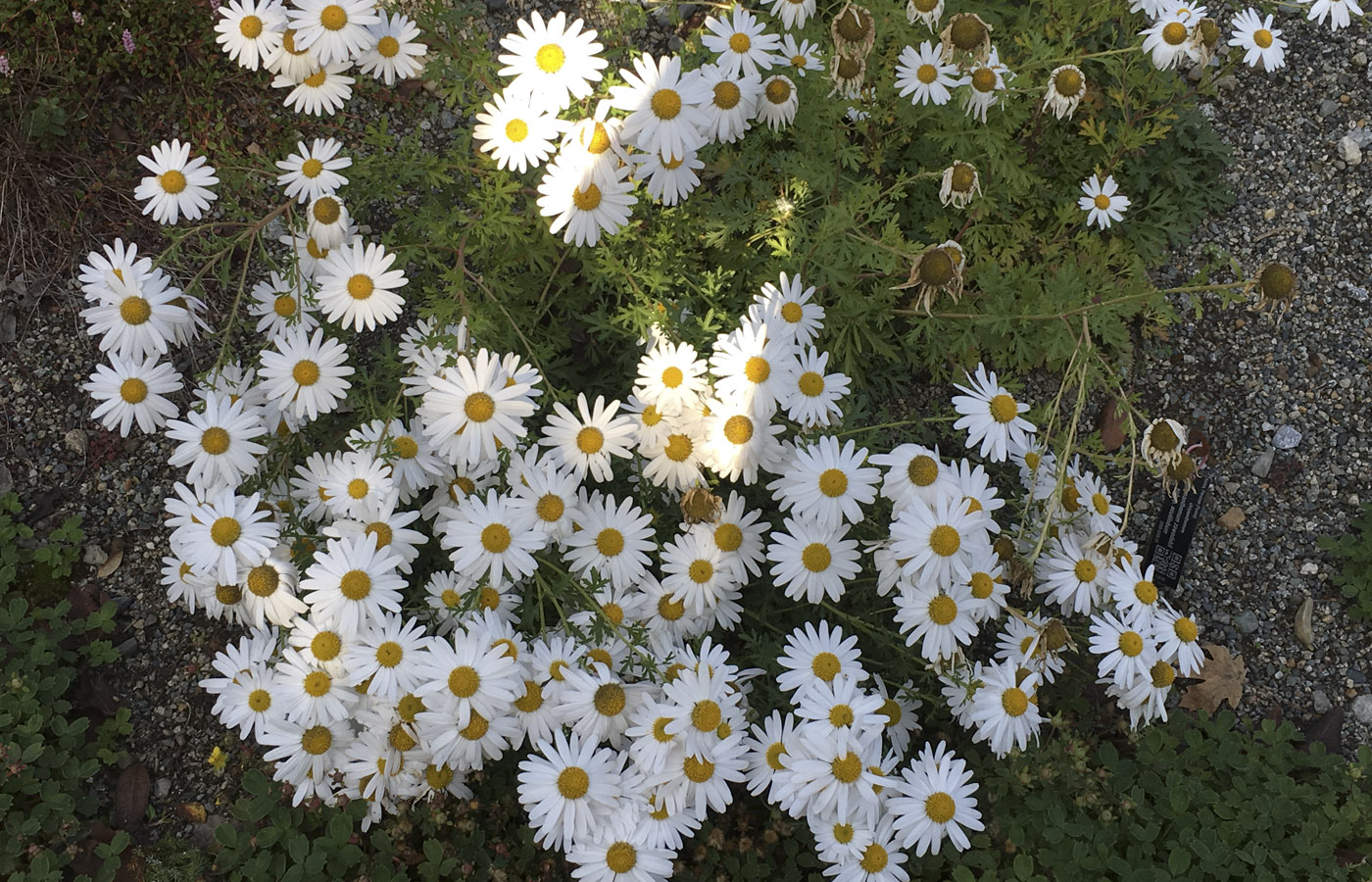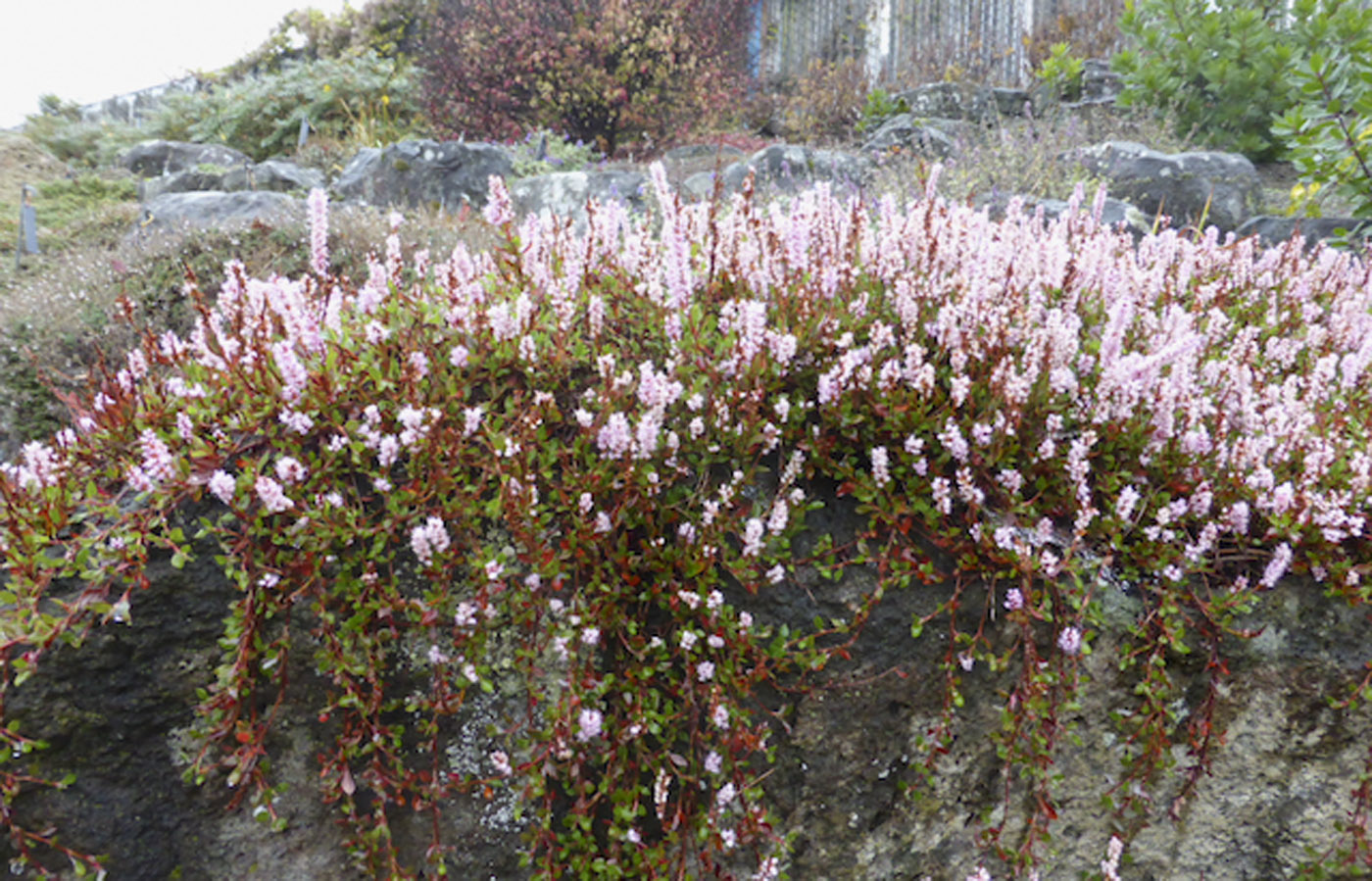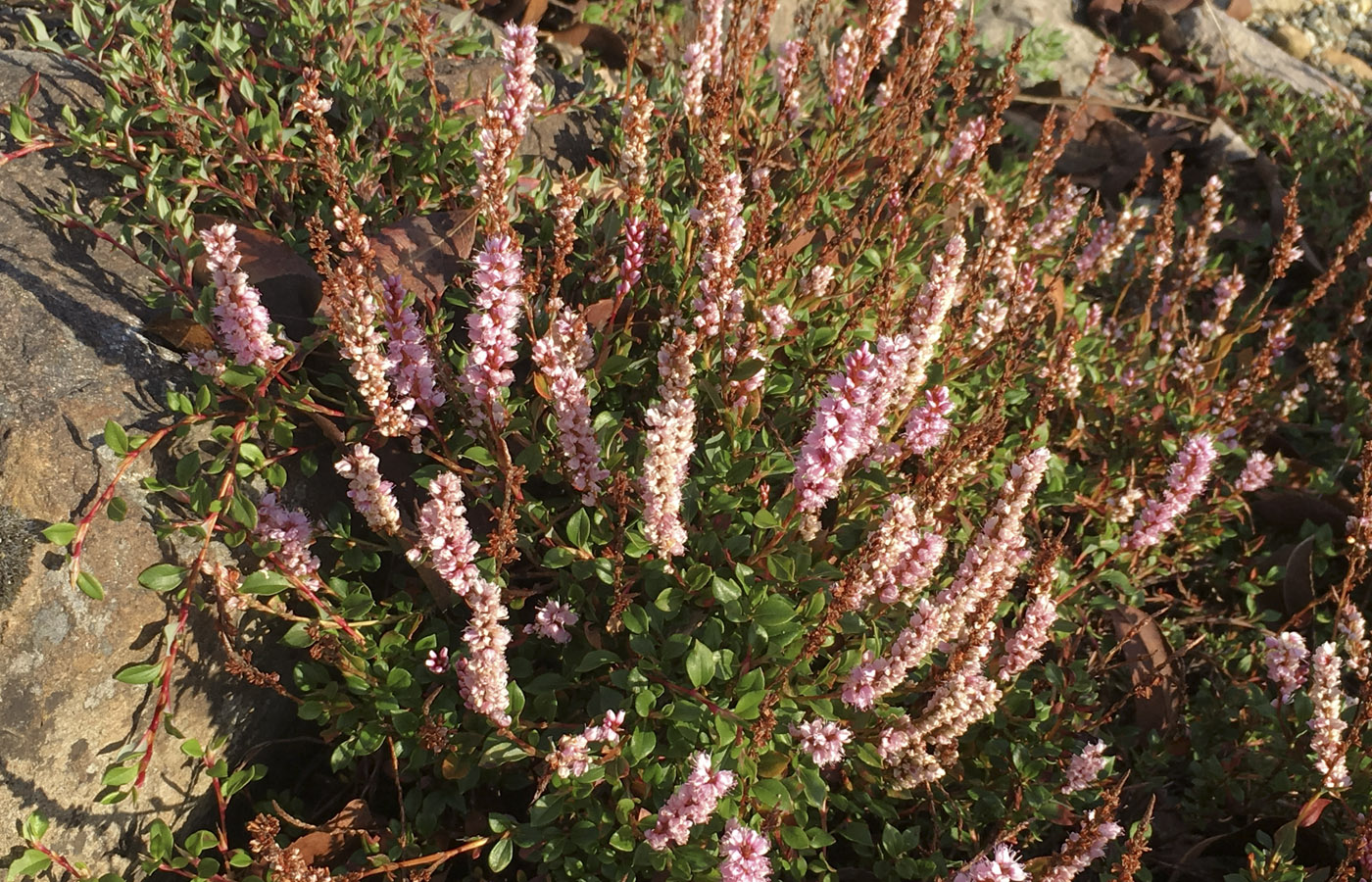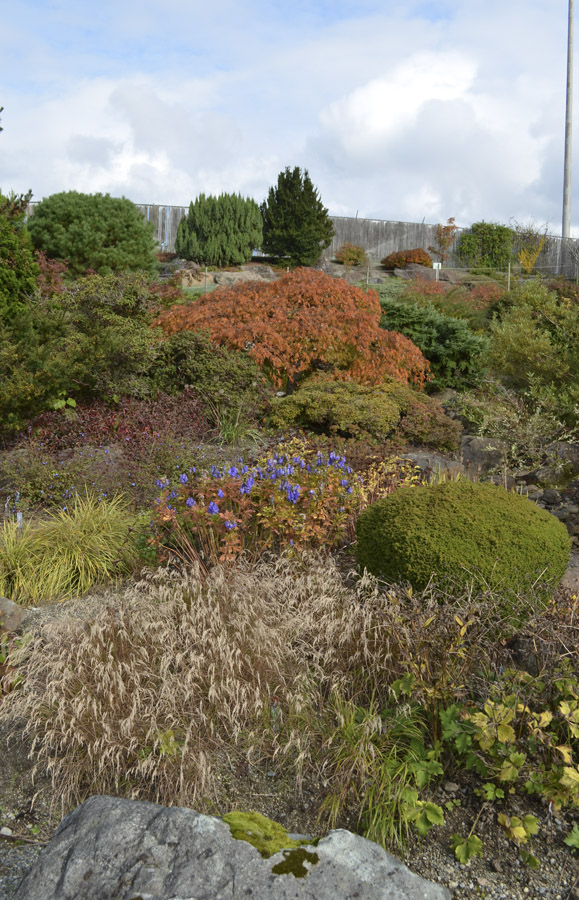For a self-guided tour, use Garden Explorer to locate plants featured in this month’s post. Select a tour in the drop-down menu.
November is often considered a time for staying indoors. While we often get our first cold lashing rains of winter in November, those days are mercifully rare. In any case—particularly this year—it’s always worth getting outside for a walk. Plants with colourful foliage and berries are no revelation at this time year, but many would be surprised by the number of plants with flowers in UBC Botanical Garden.
In some cases, it may be fragrance, rather than any visual cue that indicates a floral presence in the garden. Take silver oleaster, Elaeagnus macrophylla, for example, found in the David C. Lam Asian Garden. This evergreen climber from maritime areas of Japan, southern Korea and eastern China has tiny white tubular flowers that pack a powerful gardenia-and-orange blossom fragrance. It drapes itself onto an unusual, smooth-leaved cotoneaster, C. glabratus, and a shrubby whitebeam—an as of yet unverified Aria species (labeled Sorbus caloneura)—near the corner of Kingdon Ward Way and Lower Asian Way. The oleaster not only has deliciously fragrant flowers, but attractive, silvery-backed evergreen leaves. Just as subtle are the minuscule but attractive spidery red flowers of the redbud hazel, Disanthus cercidifolius. These emit a strange semi-metallic aroma—a fragrance more unusual than unpleasant. The redbud hazel’s usual claim to fame is its spectacular autumn leaf display, which comes to an end in November, as its flowers open. There are several of these plants in the Asian Garden, the most accessible specimen on Forrest Trail (immediately south of the bridge).
Still, there are several plants with truly showy flowers that appear in November. In the Asian Garden, the Nippon daisy, Nipponanthemum nipponicum is just reaching its peak this month. It is a sprawling, evergreen subshrub with large, white-rayed daisies (they look a bit like Shasta daisy flowers), at the corner of Lower Asian Way and Kingdon Ward Way, right next to the aforementioned Elaeagnus. Indeed, there are many daisies elsewhere in the garden (Rudbeckia, Calendula, Rhodanthemum, Chrysanthemum, etc.) that will continue to flower as long as frosts are mild or delayed. One of the showiest is the hardy dwarf mum, Chrysanthemum zawadskii subsp. acutilobum, of which there are a couple of plantings in the Asian section of the E. H. Lohbrunner Alpine Garden.
In flower at the Garden’s entrance since September is the river lily, Hesperantha coccinea, which often, barring hard frosts, continues to bloom into December. Its knee-high spikes of large, lipstick-red flowers always cause a sensation. A number of monkshoods (Aconitum species) are also autumn flowering. Like the Nippon daisy and river lily, monkshoods have no discernible fragrance, but the beauty of their purple-blue helmet-shaped flowers easily makes up for it. There is a beautiful, albeit sprawling specimen of the Northeast Asian A. uchiyamai at the corner of Upper Asian Way and the service road, near the Asian Garden entrance, and the more compact, clumping A. fischeri near the entrance to the E.H. Lohbrunner Alpine Garden.
For flower appeal in the Garden at any time, it’s hard to beat the Alpine Garden. The list of flowers here in November is impressive, from several kinds of evergreen daisies to the flashy bulbous South Africans, such as nerines, dieramas and moraeas. Even as their leaves are falling, South American fuchsias continue to attract hummingbirds. So too, does the shrubby, vermillion-flowered Epilobium canum (California fuchsia) in the North American Section. And as a fitting nod to the colder weather to come, the low, carpeting Himalayan rock bistort, Bistorta vacciniifolia, now with tiny spikes of soft pink flowers, will increasingly, and especially with frost, adopt an attractive rusty hue.
Submitted by: Douglas Justice, Associate Director, Horticulture and Collections
- Sorbus caloneura
- Nipponanthemum nipponicum
- Epilobium canum
- Elaeagnus macrophylla
- Disanthus cercidifolius
- Cotoneaster glabratus; Rosaceae; 1983-0602.01; 23057/0-0523-1983; 3AD2; Plant Accession
- Chrysanthemum zawadskii subsp. acutilobum
- Chrysanthemum zawadskii subsp. acutilobum
- Bistorta vacciniifolia
- Bistorta vacciniifolia
- Aconitum uchiyamai
- Aconitum fischeri
- Aconitum fischeri














